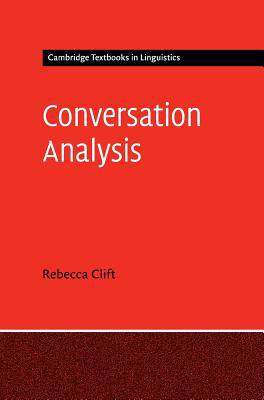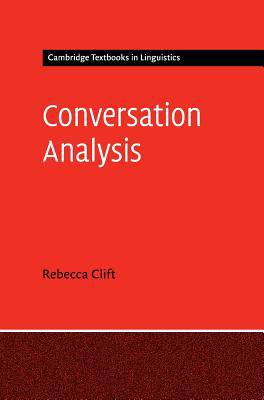
Door een staking bij bpost kan je online bestelling op dit moment iets langer onderweg zijn dan voorzien. Dringend iets nodig? Onze winkels ontvangen jou met open armen!
- Afhalen na 1 uur in een winkel met voorraad
- Gratis thuislevering in België vanaf € 30
- Ruim aanbod met 7 miljoen producten
Door een staking bij bpost kan je online bestelling op dit moment iets langer onderweg zijn dan voorzien. Dringend iets nodig? Onze winkels ontvangen jou met open armen!
- Afhalen na 1 uur in een winkel met voorraad
- Gratis thuislevering in België vanaf € 30
- Ruim aanbod met 7 miljoen producten
Zoeken
€ 164,45
+ 328 punten
Uitvoering
Omschrijving
We live our lives in conversation, building families, societies and civilisations. In over seven thousand languages across the world, the basic infrastructure by which we communicate remains the same. This is the first ever book-length linguistic introduction to conversation analysis (CA), the field that has done more than any other to illuminate the mechanics of interaction. Starting by locating CA by reference to a number of cognate disciplines investigating language in use, it provides an overview of the origins and methodology of CA. By using conversational data from a range of languages, it examines the basic apparatus of sequence organisation: turn-taking, preference, identity construction and repair. As the basis for these investigations, the book uses the twin analytic resources of action and sequence to throw new light on the origins and nature of language use.
Specificaties
Betrokkenen
- Auteur(s):
- Uitgeverij:
Inhoud
- Aantal bladzijden:
- 334
- Taal:
- Engels
- Reeks:
Eigenschappen
- Productcode (EAN):
- 9780521198509
- Verschijningsdatum:
- 8/09/2016
- Uitvoering:
- Hardcover
- Formaat:
- Genaaid
- Afmetingen:
- 174 mm x 257 mm
- Gewicht:
- 793 g

Alleen bij Standaard Boekhandel
+ 328 punten op je klantenkaart van Standaard Boekhandel
Beoordelingen
We publiceren alleen reviews die voldoen aan de voorwaarden voor reviews. Bekijk onze voorwaarden voor reviews.











